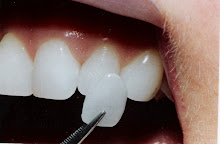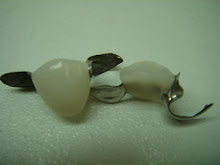
Ask anyone in the dental industry (from supplier to lab technician) what the hottest thing in dentistry is today and he/she will tell you that it’s dental implants. At a talk I gave at Nanyang Polytechnic in October 2007, the majority of questions from the audience were about dental implants.
Some years ago, when a colleague told me that implants are going to be the next big thing to take the sunset out of our profession, I shrugged off his optimism with typical cynicism. Implants are expensive for both the dentist and the patient. With so many people claiming that they can’t afford crowns and bridges, who is going to spend thousands of dollars on implants?

It took quite a while before I took the plunge and invested in an implant system. The response from patients was unexpectedly encouraging. Not being the studying type, I did not spend too much time and money on courses and conferences. Instead, much of the training I had in dental implants came from assisting cases handled by experienced oral surgeons in the operating room. I believe in hands-on training.

Today, implants are the in thing at my new practice. There are people willing to spend some money to have teeth that can often function or sometimes, even look like natural teeth. Looking back, I was certainly wrong about the demand for dental implants. I just needed the right environment and the right patients.
The Ugly Side
Implant dentistry has a lot to do with dollars and cents. Make no mistake about it, implants are expensive, not only for patients, but also for dentists. It may sound ridiculous, but it is quite possible for a dentist to lose money doing implants even after charging thousands of dollars for it.
When dental implants first emerged on the scene in Singapore, they were mostly done by specialist oral surgeons. Prices were prohibitive and results were by no means perfect, but that was the state of the art back then. Patients had lost almost all of their teeth and had little choice.
It was not until surgical kits were first distributed to ambitious general practitioners (GPs) that dental implants started becoming popular. Newly designed surgical kits were user friendly and didn’t require a lot of training to use. However, patients who opted for implants were also doing it for fewer and fewer teeth. They now expected the implanted teeth to match their remaining natural teeth.
Prices, however, dropped only slightly. Why? That’s because the distributors of implant systems would push packages worth tens of thousands of dollars onto dentists. It may seem like a good deal at first, but dentists who have taken up a system may have to do their own pushing to recover the cost of the investment.
Anatomical Risk Factors & Costly Remedies
That’s where trouble may begin. Implants are not magical. They can’t just stick to your gums and function like teeth. They need bone which is seldom sufficient in patients who have lost their teeth for some time. This problem is sometimes overcome by grafting and promoting the formation of new bone. It may also involve advanced procedures like ridge splitting and sinus grafting. All these procedures will add cost to implant treatment.
The patient’s remaining teeth may also not be in the ideal positions/alignment to accommodate implants. Spacing may be too large or too small. Orthodontic treatment is often necessary to obtain good results. Again, that will add significantly to the cost.
The Learning Curve
Besides that, the budding implant practitioner would also be confronted with manufacturers who claim that their implants are the best and will work where others fail. There is never a shortage of opinion leaders who favour a certain system. These folks are employed by their respective favourite manufacturers to highlight the pros and hide the cons for their systems. Compulsory continuing education is often provided by dental suppliers and product manufacturers. Their marketing efforts are sometimes subtle, sometimes not so subtle and always aimed at maximising sales. Dentists being humans, often fall prey to aggressive advertising.
Compromises
Dentists who have purchased expensive packages will feel compelled to persuade even the relatively challenging candidates to get their implants done. Or when patients ask for a compromise like 3 implants instead of 4, they may feel obliged to do it even though it may go against their better judgement les the patient ends up with a competing colleague who dares take the risks and gets away with it. When in doubt whether implants will work under compromised situations, they consult the manufacturers and their experts.
“Too close to the sinus? No problem. We have short implants. Of course they work.”
“Bone too thin? No problem. Any other type of implant may fail, but ours will be fine.”
It’s not hard to imagine that as more and more implants flood the market, more and more patients think implants are cool, the number of potential implant cases will multiply and so will the number of patients and practitioners (both budding and experienced) willing to compromise to save costs. With enough botched up cases receiving public attention, the profession is going to suffer some major setback. Worse, patients in general, even those whose cases are not too difficult, may lose confidence in implants.

Expectations
Apart from the disaster of losing implants, another problem is that of long term aesthetics. Your implants replacing your front teeth may look very nice immediately after completion, but a few years later, metal may show and parts may come loose. There are way to prevent and rectify all that, but they all cost money. The cost of doing a standard, straightforward case is already very high to some patients. If we add in the cost of additional surgery and other procedures, patients may either think that the dentist is trying to rip them off, or they may choose to see a dentist who is not aware of the potential problems. Dr. Axel Kirsch who designed Camlog implants, once said that his patients must have no “economic problems”. The same criteria should apply to patients who have less than ideal conditions for the dentist to work on. It’s impossible to cut corners, charge cheap and still end up with ideal, durable results. Patients must be perpared to undergo surgical revisions. They should certainly be prepared for implant restorations not looking their best.





















No comments:
Post a Comment